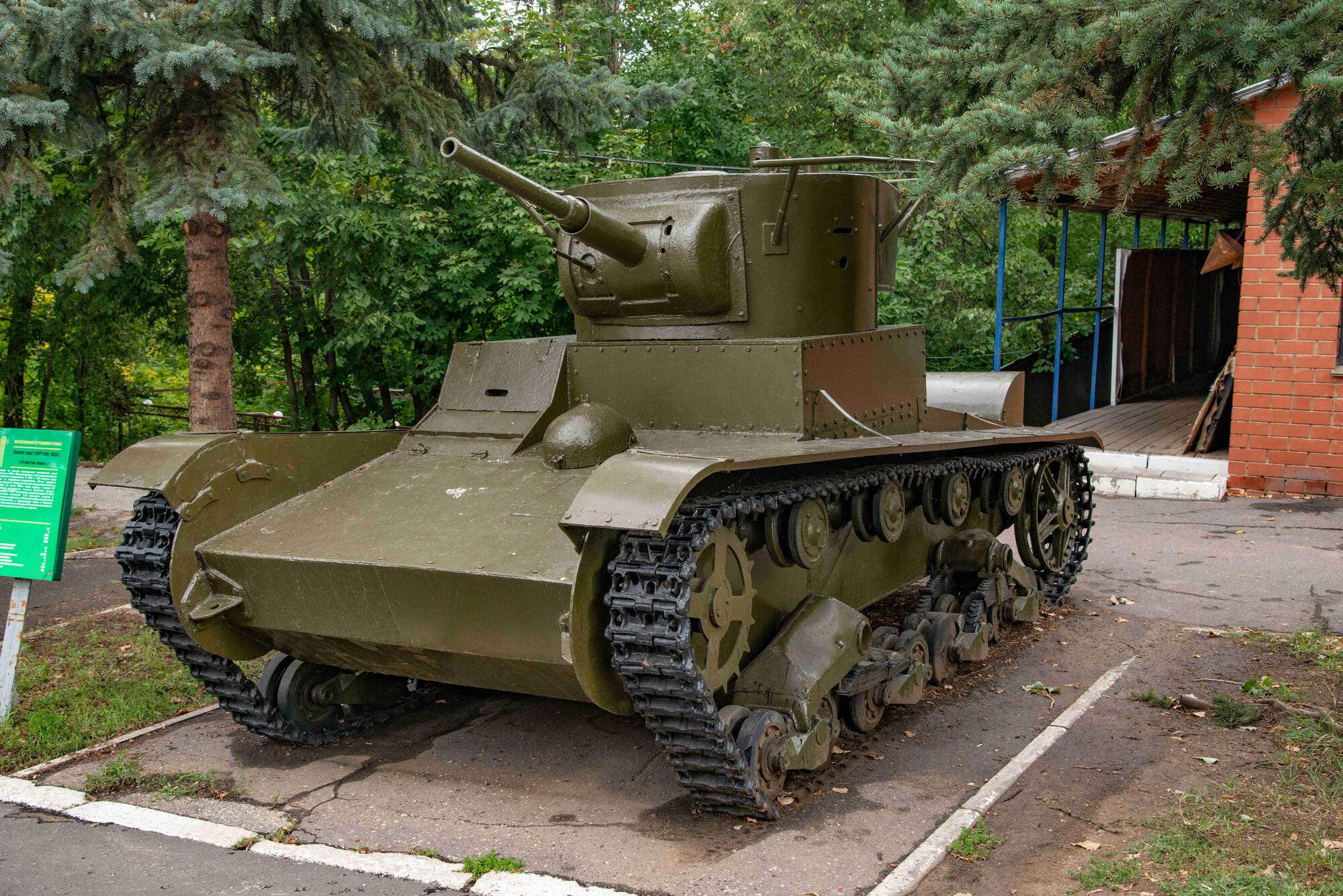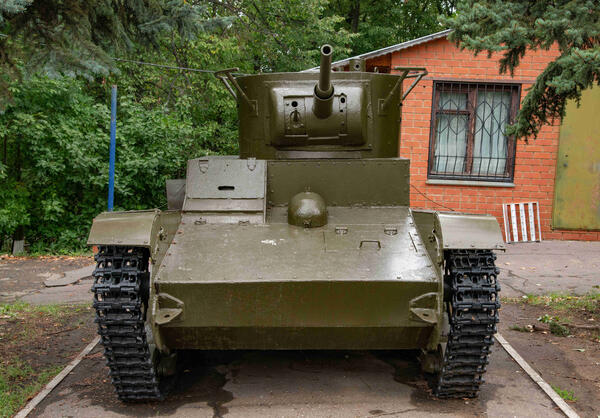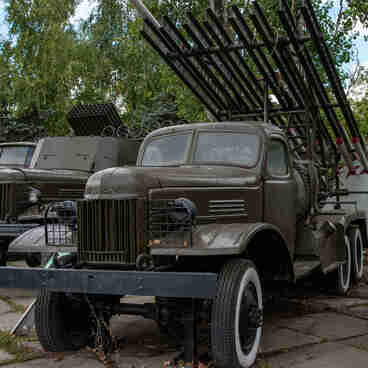The T-26 light tank was developed in 1931. Its design was based on the British Vickers tank. The first version of the T-26 had two turrets and was fitted with machine guns. In 1933, the T-26 tank received one turret with main and secondary armament: a 45mm cannon and a 7.62mm machine gun.
The T-26 tank in a single-turret version was developed in the design bureau of Leningrad Plant No. 174 under the leadership of Semyon Alexandrovich Ginzburg. It differed from its twin-turret version by reinforced cannon armament, as well as in height and weight.
To install more powerful weapons, designers developed a cylindrical balanced riveted turret for two gunners with a large oval-shaped rear niche. It served as a counterweight for the gun, as well as for storing ammunition or for setting up a radio station.
The turret was shifted to the left side; thus, the underturret plate of the hull was also changed. The design of the turret allowed for all-angle fire in the horizontal plane from the tank’s cannon and machine gun.
The gun was intended for targeting armored vehicles, artillery, openly positioned combat weapons and enemy manpower with both armor-piercing and fragmentation shells.
From the autumn of 1933, a short-wave radiotelephone and radiotelegraph station was installed on some single-turret tanks, which received the designation T-26RT. Such devices were fitted primarily on the vehicles of unit commanders.
The T-26 light tank was used in armed conflicts with Japan in the Far East, in the Spanish Civil War, the Soviet-Finnish War and the Great Patriotic War. In total, about 12 thousand units were manufactured.
In the initial period of the Great Patriotic War, most of the Soviet light tanks were destroyed in battles. However, some of the T-26 tanks remained in service with the troops stationed in the Far East. In August 1945, they were used in Manchuria when the Japanese army suffered a significant defeat.
The tank from the museum was assembled from parts of combat vehicles that were found near the town of Yelnya, Smolensk Oblast, at the defensive line along the Uzha River.
The T-26 tank in a single-turret version was developed in the design bureau of Leningrad Plant No. 174 under the leadership of Semyon Alexandrovich Ginzburg. It differed from its twin-turret version by reinforced cannon armament, as well as in height and weight.
To install more powerful weapons, designers developed a cylindrical balanced riveted turret for two gunners with a large oval-shaped rear niche. It served as a counterweight for the gun, as well as for storing ammunition or for setting up a radio station.
The turret was shifted to the left side; thus, the underturret plate of the hull was also changed. The design of the turret allowed for all-angle fire in the horizontal plane from the tank’s cannon and machine gun.
The gun was intended for targeting armored vehicles, artillery, openly positioned combat weapons and enemy manpower with both armor-piercing and fragmentation shells.
From the autumn of 1933, a short-wave radiotelephone and radiotelegraph station was installed on some single-turret tanks, which received the designation T-26RT. Such devices were fitted primarily on the vehicles of unit commanders.
The T-26 light tank was used in armed conflicts with Japan in the Far East, in the Spanish Civil War, the Soviet-Finnish War and the Great Patriotic War. In total, about 12 thousand units were manufactured.
In the initial period of the Great Patriotic War, most of the Soviet light tanks were destroyed in battles. However, some of the T-26 tanks remained in service with the troops stationed in the Far East. In August 1945, they were used in Manchuria when the Japanese army suffered a significant defeat.
The tank from the museum was assembled from parts of combat vehicles that were found near the town of Yelnya, Smolensk Oblast, at the defensive line along the Uzha River.





